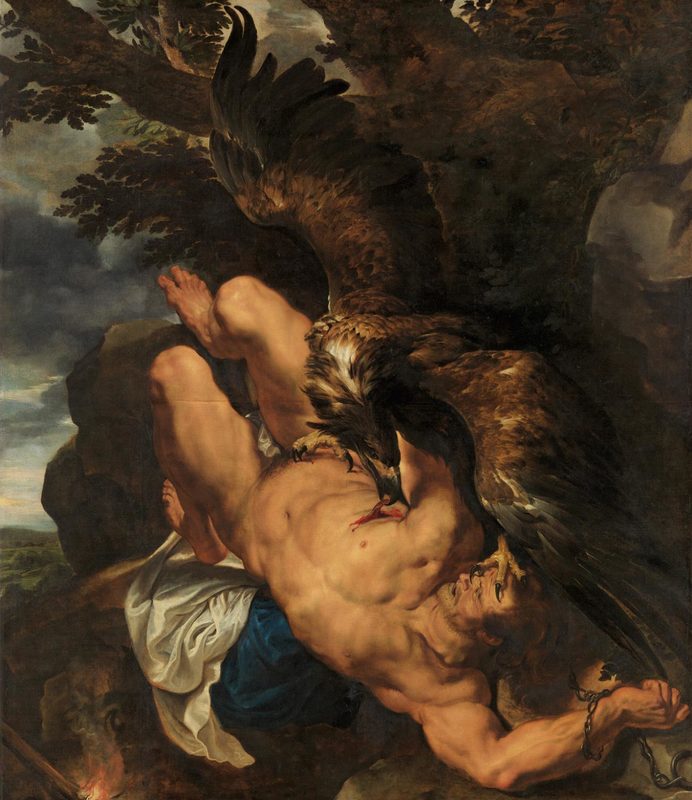Prometheus Bound
Item
-
Title
-
Prometheus Bound
-
Description
-
“In Greek mythology the Titan Prometheus stole fire from the gods on Mount Olympus to give to humanity. Furious, Zeus, king of the Olympians, ordered Prometheus forever chained to a rock, where each day an eagle would devour the Titan’s perpetually regenerating liver. This painting, which Rubens considered one of his most important works, represents the virtuoso artist at his absolute height. Working in collaboration, a common practice for master artists in Antwerp in the first two decades of the seventeenth century, Rubens and the famed animal and still-life painter Frans Snyders, who contributed the eagle, rendered the brutal tale of Prometheus with corresponding violence. The enormous bird’s beak rips open the Titan’s torso, exposing blood-soaked entrails. To gain purchase on the captive’s flesh, one of the eagle’s talons gouges Prometheus’s right eye. His left eye is locked on the predator, signaling he is fully aware of his torture, while his writhing legs, clenched fist, and tousled hair convey the Titan’s abject agony. Rubens, who intensively had studied the art he saw on his travels to Italy, Spain, and England, derived the hulking figure of Prometheus, with its broad frame and dense musculature, from prototypes by Michelangelo. The picture’s asymmetrical composition, in which Prometheus tumbles downward with his left arm almost reaching beyond the canvas, was inspired by a painting by Titian of the giant Tityus (1548–49; Museo del Prado, Madrid). Here Rubens masterfully synthesized and melded these sources with his own Baroque sensibilities. Christopher Atkins, from Philadelphia Museum of Art: Handbook. Philadelphia: Philadelphia Museum of Art, 2014, pp. 126–127.”
-
Identifier
-
Promethean_Iconography_11
-
Date
-
circa 1611-1618 C.E.
-
Rights
-
PERMITTED USE. The Materials are made available for non-commercial, educational and personal use only or for "fair use" under the United States copyright laws. Users may download files for personal use, subject to any additional terms or restrictions applicable to the individual Materials. Users must properly cite the source of the Materials and the citations should include a link to www.philamuseum.org. By downloading, printing, or using Materials from the Websites, whether accessed directly or indirectly, users agree that they will limit their use to the uses permitted by these terms and conditions or by fair use, and will not violate the Museum’s or any other party's proprietary rights. Users may not remove any copyright, trademark, or other proprietary notices and may not modify the Materials. Downloading, copying, distributing, or otherwise using Materials for any commercial purpose is strictly prohibited.
-
Copyright
 Prometheus_Bound
Prometheus_Bound